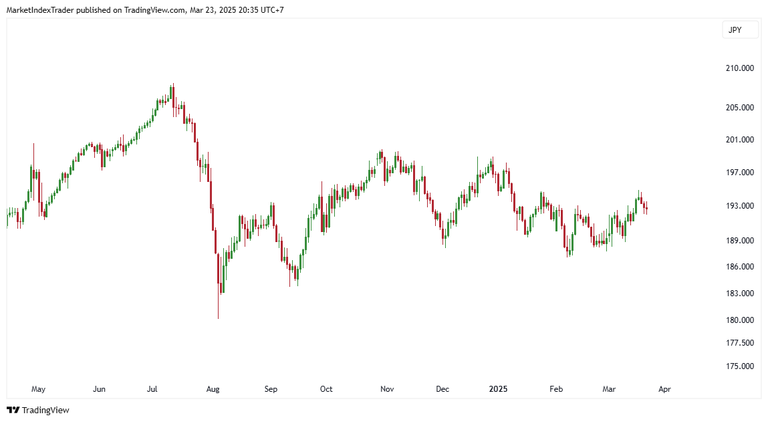BANK OF JAPAN (BOJ)

What’s Happening with the Japanese Economy & the Yen (JPY)?
The Bank of Japan (BOJ) decided to maintain interest rates at 0.5%, affirming that the economy is recovering at a moderate pace, though notable weaknesses persist.
Exports and industrial production are stagnating, while domestic consumption is growing despite inflationary pressures. Inflation is currently fluctuating between 3.0-3.5%, driven by rising wages and the gradual phasing out of government energy subsidies.
BOJ Governor Kazuo Ueda stated that wage negotiation outcomes are in line with expectations, perhaps even slightly more positive than anticipated. He also emphasized significant uncertainties related to U.S. tariffs and the global economy, which could impact Japan.
“We want to act before it’s too late,” Ueda remarked, underscoring the importance of achieving the 2% inflation target to maintain the BOJ’s policy credibility.
What does this mean for the Yen (JPY)?

In the short term, the BOJ’s dovish stance compared to the Fed and other central banks is putting downward pressure on the Yen, as investors favor higher-yielding currencies. However, if Japan continues to see wage increases and stable inflation, the BOJ might shift toward a tighter monetary policy, potentially strengthening the JPY in the medium term.
JPY Outlook
The BOJ remains dovish, but rising wages and strong consumption could prompt a policy shift. In the short term, the JPY faces downward pressure, but it may recover in the medium term if the BOJ adjusts its stance.
BANK OF ENGLAND (BOE)
GBP Update After BoE’s Decision – March 2025
The Bank of England (BoE) kept interest rates at 4.5% with an 8-1 vote. The message was clear: caution amid uncertainty and gradual adjustments.
What did the BoE say?
Disinflation has made progress, but wage and price pressures remain.
CPI inflation rose to 3% and is expected to reach 3.75% in Q3 2025.
Significant risks stem from U.S. tariffs, geopolitics, and Germany’s economic situation.
Economic growth has slightly improved, but the labor market remains weak.
What does this mean for GBP?
No rate cuts ➜ A positive signal for the British Pound.
BoE remains cautious ➜ Still hawkish.
Uncertainty keeps markets on edge but supports high-yield currencies like GBP.
Conclusion: The British Pound maintains its strength as long as the BoE shows no clear signs of moving toward rate cuts.
Short-term levels:
The GBP/USD pair is finding support around 1.2900 and resistance near 1.3000.
Key things to watch:
UK inflation and wage data.
Potential shift in the Fed’s stance.
U.S. tariff developments – April 2.